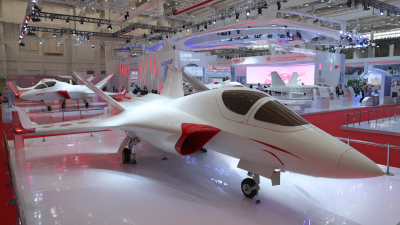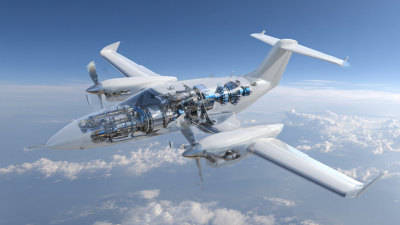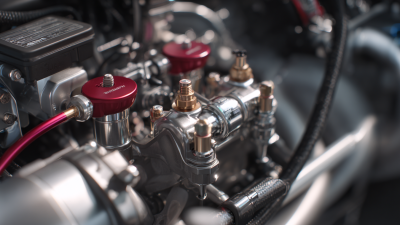Exploring the Future of Fuel System Aviation Innovations and Sustainability
The global aviation industry is on the brink of a significant transformation as it explores innovative solutions to enhance sustainability within fuel system aviation. According to the IATA, air travel is projected to double by 2037, escalating the necessity for cleaner, more efficient fuel systems to meet stricter environmental regulations.

With the industry accounting for approximately 2-3% of global carbon emissions, there is an urgent need to adopt alternative fuels and advanced technologies. The use of sustainable aviation fuels (SAFs) is gaining momentum, with the potential to reduce lifecycle greenhouse gas emissions by up to 80%.
Additionally, advancements in fuel system design and management are crucial for optimizing aircraft performance and minimizing waste. This article delves into the promising innovations reshaping fuel systems in aviation, highlighting their importance in crafting a more sustainable future for air travel and contributing to the reduction of the industry's carbon footprint.
The Role of Renewable Energy Sources in Aviation Fuel Systems
The aviation industry is on the brink of a revolutionary shift towards renewable energy sources, which is crucial for creating sustainable fuel systems. With the demand for air transport reaching unprecedented levels, alternative aviation fuels, such as biofuels and hydrogen fuels, have emerged as viable solutions to curb carbon emissions. Countries like Spain are leading the charge, exploring sustainable fuel production that not only aids in decarbonization but also enhances their industrial prowess in the global market.
Tips: When considering renewable energy sources for aviation, focus on local sustainability. Utilizing resources available within the region can minimize transportation emissions and strengthen local economies.
Innovations in aviation fuel technologies are also gaining momentum, with groundbreaking processes transforming underutilized materials into sustainable aviation fuel (SAF). For instance, the conversion of agricultural waste like cow manure into jet fuel demonstrates the potential of waste-to-energy strategies. Investing in these technologies not only improves resource efficiency but also supports the transition to greener aviation practices.
Tips: Stay informed about the latest developments in sustainable aviation technologies to identify investment opportunities and potential partnerships that align with environmental goals.
Innovative Technologies Transforming Aircraft Propulsion
 The aviation industry is on the cusp of a significant transformation, driven by innovative technologies that promise to revolutionize aircraft propulsion. Recent developments highlight a strong trend towards electric propulsion systems, exemplified by the collaboration between aerospace companies to develop advanced electric propulsion solutions. This innovation not only aims to enhance the efficiency of aircraft but also reduces the environmental footprint, bringing sustainable practices to the forefront of aviation.
The aviation industry is on the cusp of a significant transformation, driven by innovative technologies that promise to revolutionize aircraft propulsion. Recent developments highlight a strong trend towards electric propulsion systems, exemplified by the collaboration between aerospace companies to develop advanced electric propulsion solutions. This innovation not only aims to enhance the efficiency of aircraft but also reduces the environmental footprint, bringing sustainable practices to the forefront of aviation.
Reports from industry analysts suggest that the global market for electric aircraft propulsion systems is projected to reach $4.8 billion by 2030, highlighting the urgency and potential profitability of such technologies. Hydrogen fuel cell-powered systems are also gaining momentum, with designs that convert hydrogen into electricity being tested for enhanced propulsion efficiency. As companies embark on these pioneering projects, they are expected to play a critical role in decreasing greenhouse gas emissions, with a target to achieve net-zero emissions by 2050.
Tip: Airlines and manufacturers must prioritize investments in sustainable technologies not just for compliance, but also to capture a growing segment of environmentally conscious travelers. Embracing innovations now can lead to significant long-term benefits and positioning as leaders in the green aviation movement.
Assessing the Environmental Impact of Alternative Aviation Fuels
As the aviation industry faces mounting pressure to reduce its environmental footprint, the exploration of alternative aviation fuels has gained significant momentum. These fuels, derived from renewable resources such as biomass, waste, and synthetic processes, promise to lower greenhouse gas emissions compared to traditional fossil fuels. Notably, their life cycle analysis suggests a potential for substantial reductions in carbon emissions, thus positioning them as viable candidates for achieving sustainability goals in aviation.
Nevertheless, the environmental impact of these alternative fuels extends beyond carbon footprints. Factors such as land use change, water consumption, and biodiversity loss associated with biofuel production must be scrutinized. Sustainable sourcing and production practices are essential to ensure that the benefits of alternative aviation fuels do not come at the expense of ecosystems or food security. Thus, a holistic assessment of the environmental implications of these innovations is crucial for the future of aviation sustainability, necessitating collaboration between policymakers, researchers, and industry stakeholders to foster responsible advancements.
Exploring the Future of Fuel System Aviation Innovations and Sustainability - Assessing the Environmental Impact of Alternative Aviation Fuels
| Fuel Type | Carbon Emissions (g CO2/kWh) | Energy Density (MJ/kg) | Sustainability Index (0-10) | Availability (Global %) |
|---|---|---|---|---|
| Sustainable Aviation Fuel (SAF) | 30 | 35 | 8 | 5 |
| Biofuels | 42 | 28 | 6 | 15 |
| Electric | 0 | 22 | 9 | 2 |
| Hydrogen | 20 | 120 | 7 | 1 |
Future Trends in Sustainable Fuel Development for Aviation
The aviation industry is undergoing a significant transformation as it seeks to embrace sustainable fuel development. Future trends indicate a strong shift towards biofuels and synthetic fuels, driven by the urgent need to reduce carbon emissions and combat climate change. Innovations in feedstock selection, such as using agricultural waste or algae, are paving the way for more sustainable fuel sources. As these technologies mature, they hold the promise of offering fuels that are not only cleaner but also compatible with existing aircraft engines, facilitating a smoother transition for airlines.
Additionally, advancements in hydrogen fuel technology are gaining traction, highlighting its potential for zero-emission flight. Research into fuel cells and hydrogen combustion engines is being accelerated, with many companies investing in trials and infrastructure to support this shift. The collaboration between governments, private industry, and research institutions will be crucial in overcoming the current challenges, including production scale and cost-effectiveness. As sustainable fuel solutions advance, they will play a pivotal role in the aviation sector's commitment to achieving net-zero emissions by the mid-century mark.

Collaboration Between Industry and Government for Aviation Sustainability
The collaboration between industry and government plays a crucial role in advancing aviation sustainability. As the aviation sector faces increasing pressure to reduce carbon emissions, partnerships between private companies and government entities can facilitate the development of innovative fuel systems and technologies. Governments can provide the necessary regulatory frameworks and incentives that encourage research and development, while the industry brings expertise and practical application. This synergy is essential to tackling the complex challenges of creating sustainable aviation fuel (SAF) and enhancing overall environmental performance.
Investing in sustainable aviation solutions requires a concerted effort, where both sectors can benefit from shared resources and knowledge. For instance, joint initiatives can lead to breakthroughs in alternative fuels, which not only reduce reliance on fossil fuels but also improve efficiency and performance. Collaborative research projects and funding opportunities can expedite the transition to greener technologies, fostering a resilient aviation ecosystem that supports economic growth while prioritizing environmental stewardship. This cooperative approach is vital for achieving the ambitious sustainability targets set by international organizations, ensuring a brighter, greener future for aviation.
Related Posts
-

Exploring the Future of Fuel System Aviation at the 138th Canton Fair 2025
-

Innovative Aviation Kits Showcase Opportunities at the 2025 China Import and Export Fair
-

Revolutionizing Aviation with Advanced Fuel Injection Systems Enhancing Efficiency and Performance
-

Revolutionizing Aviation: The Future of Fuel Injection Systems in Aircraft Design
-

Exploring the Future of Fuel Injection Aircraft: Innovations and Advancements in Aviation Technology
-

Unlocking Efficiency: A Deep Dive into Fuel Flow Dynamics in Modern Engines
